Clearly, the dangers werent appreciated not even by the brightest minds of the day.
Nuclear energy was seen as a clean source of unlimited power.
However, it wasnt just the U.S. Navy that sought to be nuclear-powered.
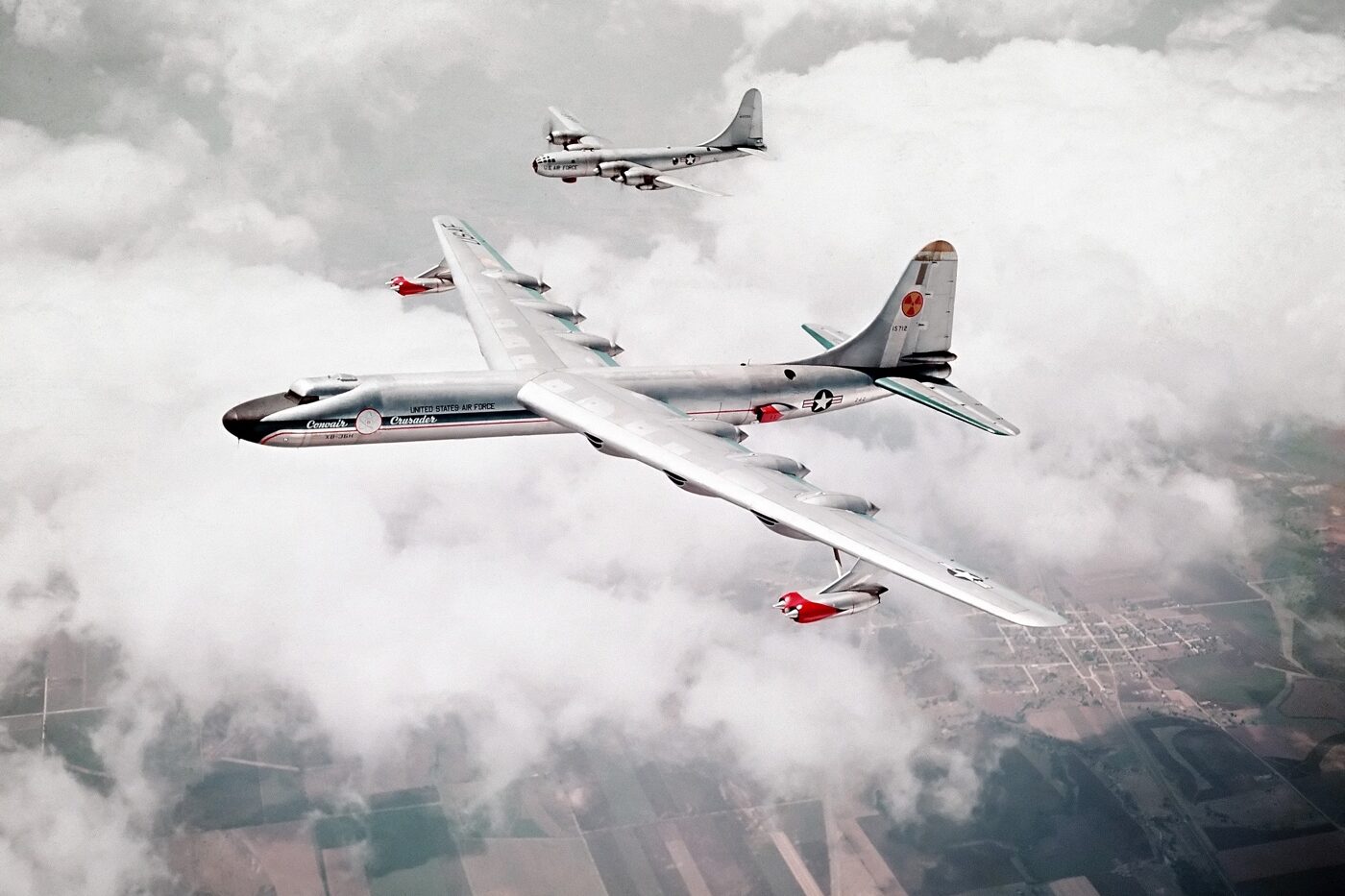
A Convair NB-36H Peacemaker test flight with a Boeing B-50 Superfortress chase plane. This plane was modified to carry a three megawatt, air-cooled nuclear reactor in its bomb bay. Image: U.S. Air Force
So, Why Not?
The services had very differing views on their roles in a full conflict.
If nuclear power could offer unlimited range and endurance for a warship, why not a bomber?
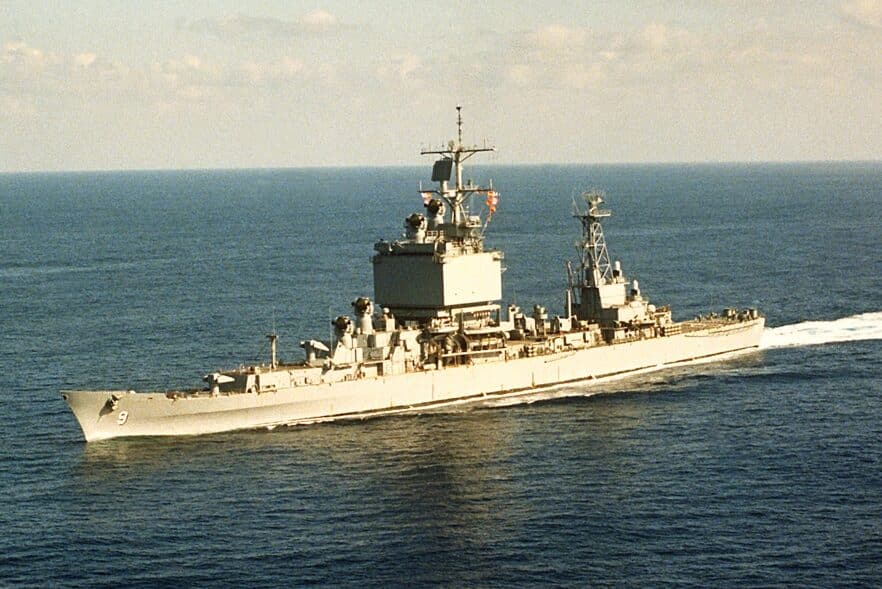
USSLong Beach(CGN-9) was the world’s first nuclear-powered surface combat ship. Part of the U.S. Navy, it was classified as a guided missile cruiser. Image: U.S. Navy
In hindsight, it is pretty easy to see the problems with the concept.
Those issues must have been ignored, if they were considered at all.
Questions continue to be raised about whether the program is worth the money.
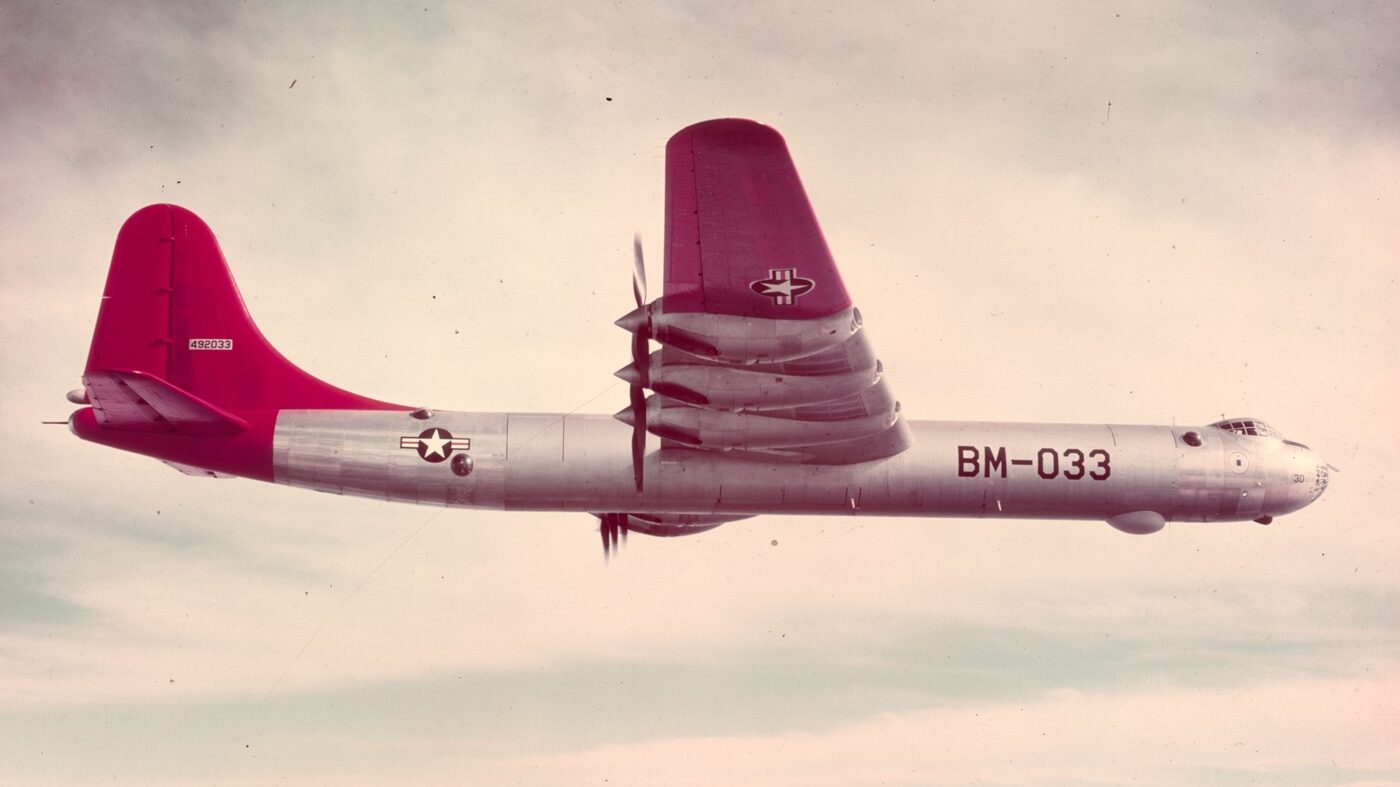
The NB-36H was built from a previously-damaged Convair B-36 Peacemaker bomber. Shown here is a standard B-36 in flight. Image: U.S. Air Force
By comparison, the nuclear-powered aircraft program would have cost more than $60 billion in 2024 dollars.
And yet, the program went forward.
It may have been an example of one that was too big to fail.
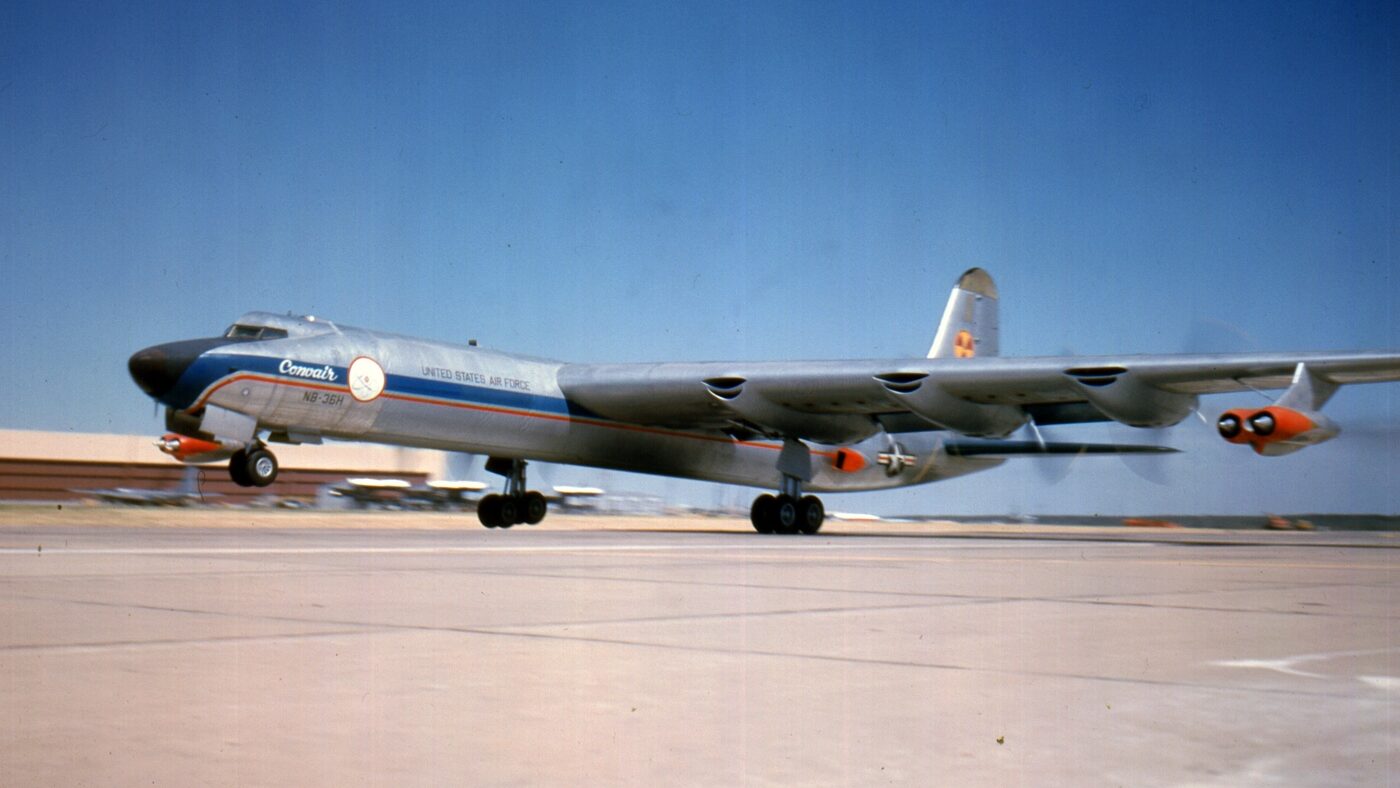
The Convair XB-36H Crusader carried a nuclear reactor aboard the aircraft. The reactor never powered the bomber in flight. Image: U.S. Air Force
The Air Force and AEC partnered and launched the Aircraft Nuclear Propulsion (ANP) Program.
This evolved into far more than a simple study.
According to the U.S.
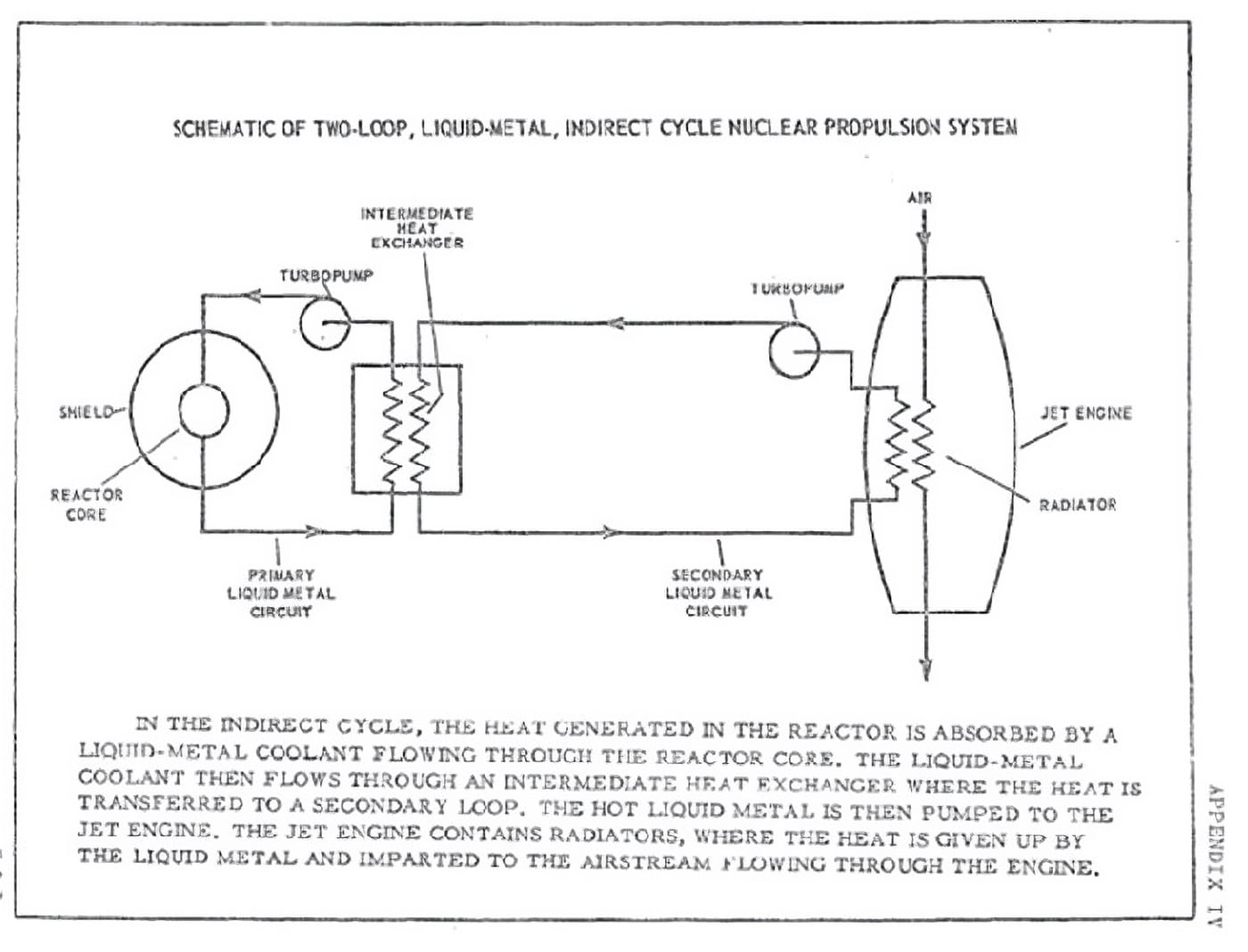
Shown here is the schematic of the two-loop liquid-metal indirect cycle nuclear propulsion system intended for use on the NB-36H bomber. Image: U.S. Air Force
Early into the program, two competing design concepts emerged for a nuclear-powered aircraft including Direct-Air-Cycle and Indirect.
The reactor, developed by the Oak Ridge National Laboratory, weighed approximately 35,000 pounds.
Moreover, although it carried the reactor, the bomber was still powered by its six gas-powered piston engines.
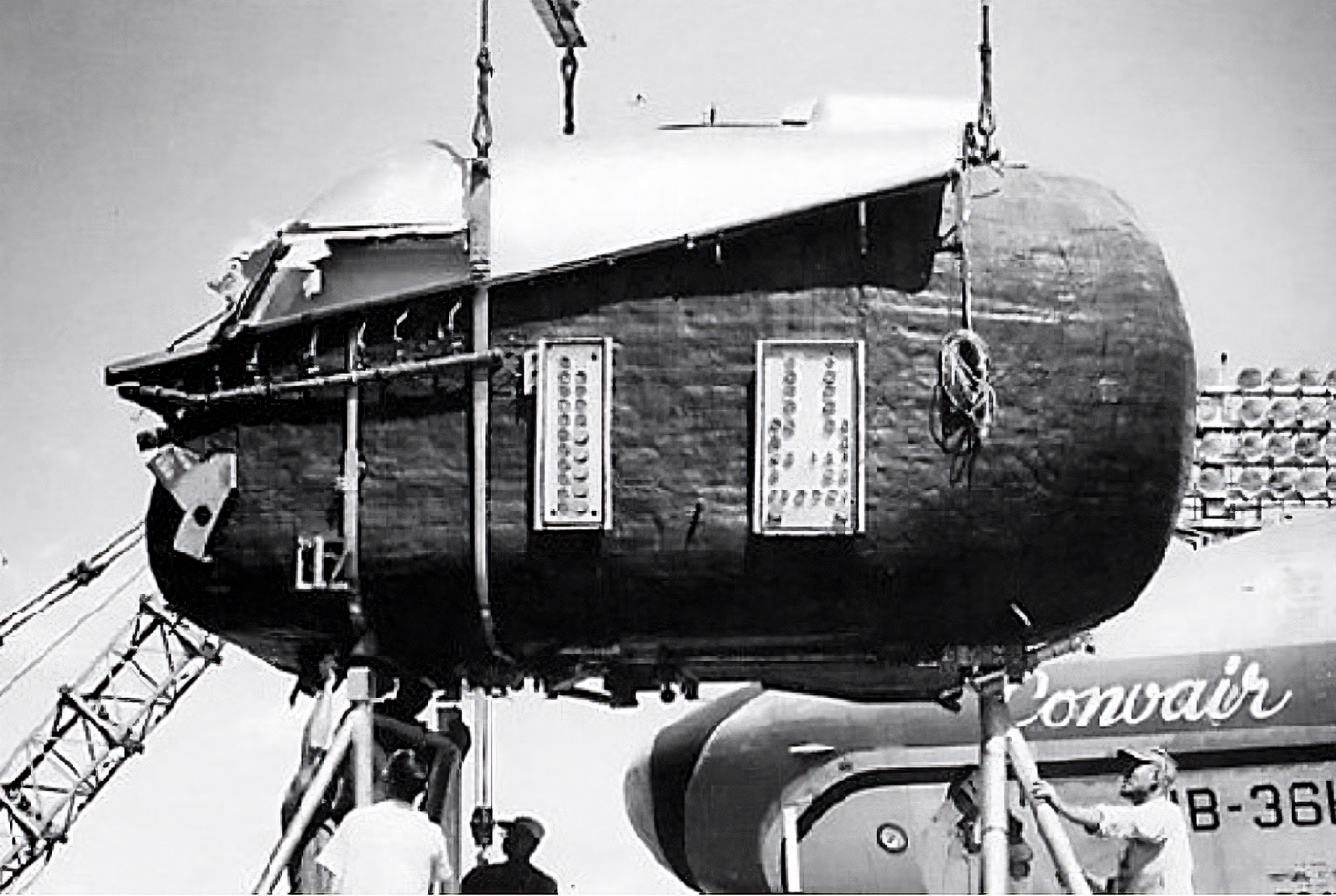
The NB-36H crew was protected by a lead-encased cockpit. As this was an experimental plane, there were no provisions made for the crew to access the rest of the aircraft. Image: U.S. Air Force
A total of 89 of the flight hours were flown with the reactor in the aircraft.
At no point in the testing were the aircrafts engines ever powered by the reactor.
The crew consisted of a pilot, a copilot, a flight engineer and a pair of nuclear engineers.
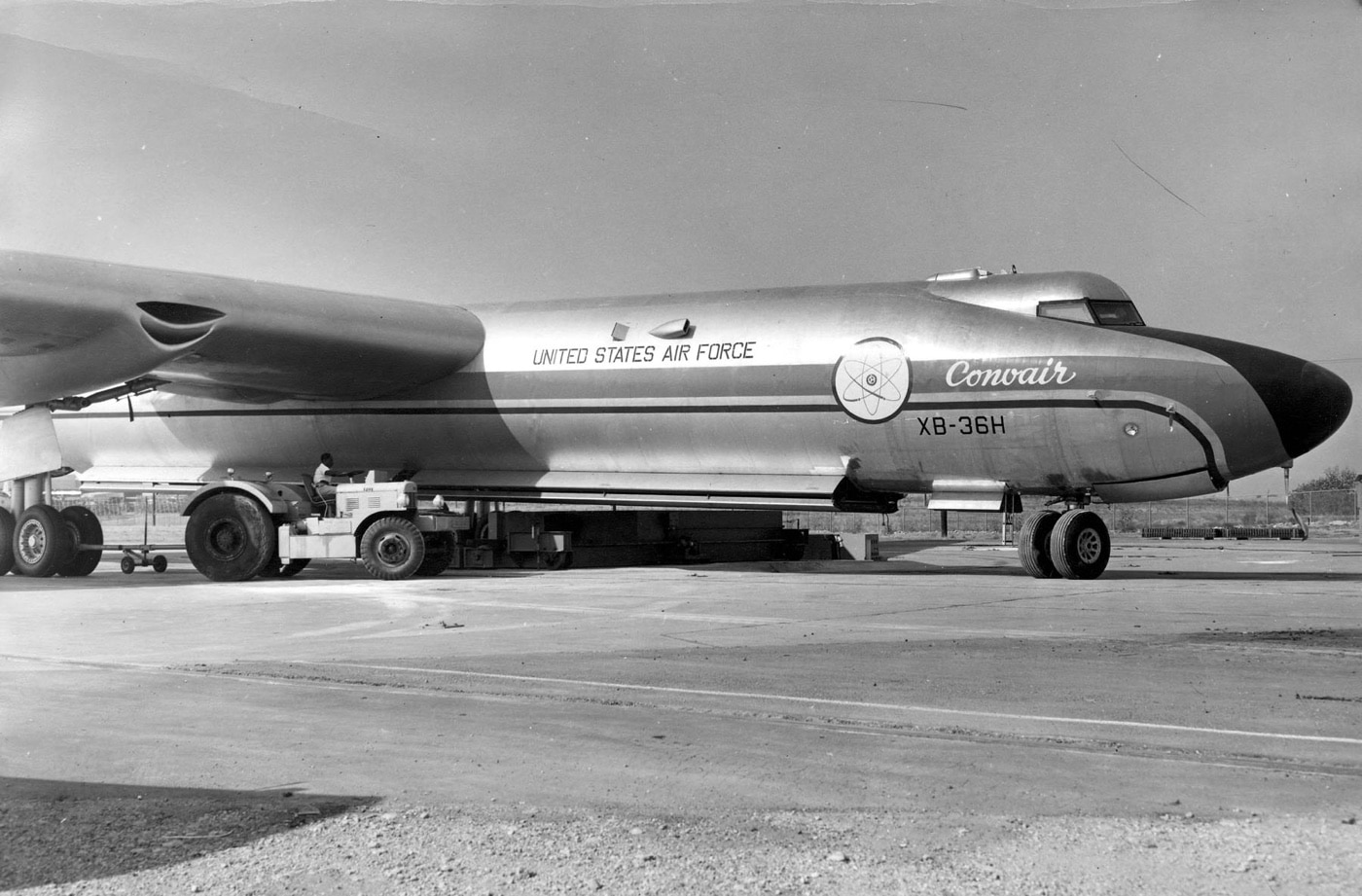
The Convair NB-36H is prepared for a test flight. The markings indicate that the plane was referred to as the XB-36H when the photo was taken. X typically means experimental. Image: U.S. Air Force
Success or Failure?
The official added that the prototype will not necessarily be any larger than the currentB-52…
The 4- or 5-man crews of such an aircraft will operate in a quiet and almost vibrationless cabin.
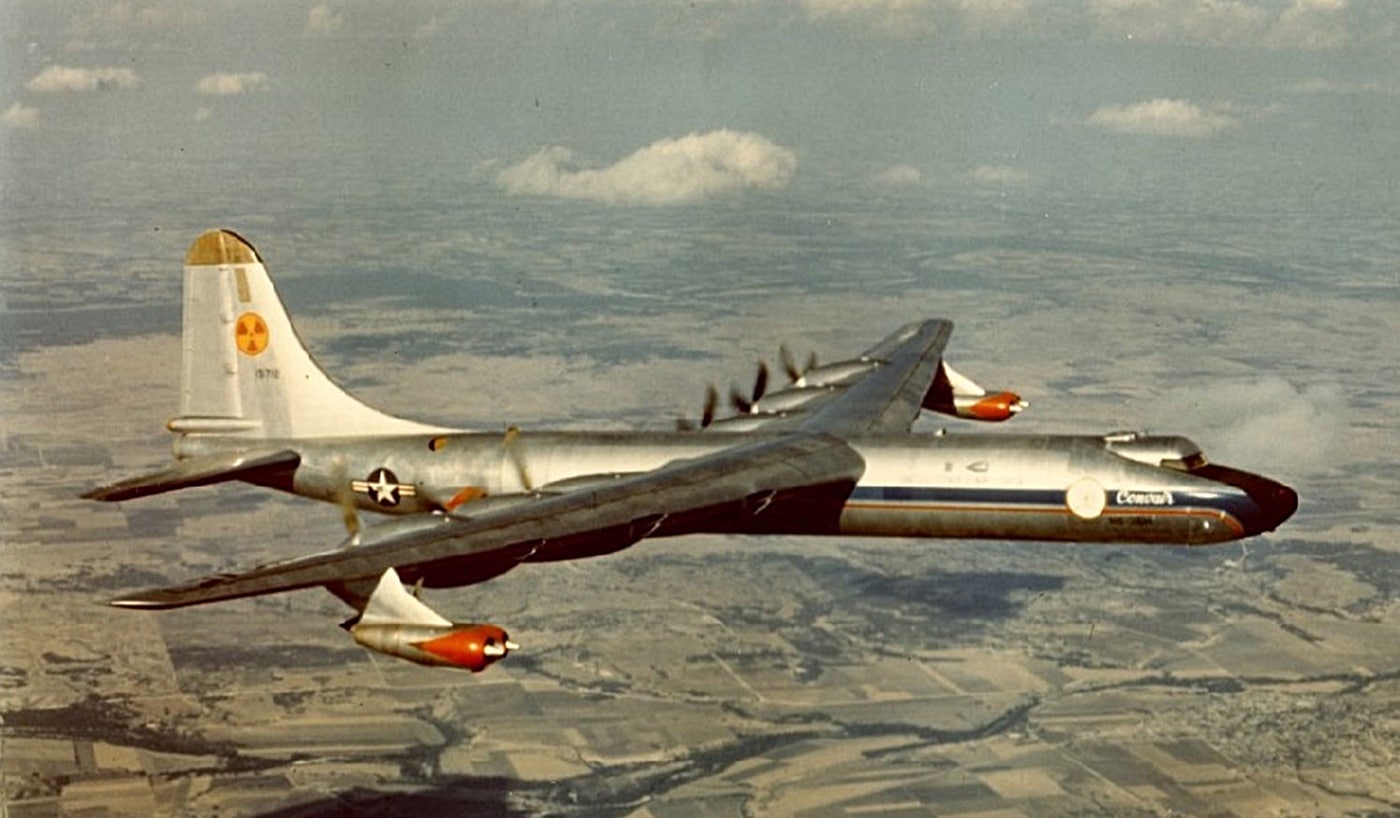
Shown here is the Convair NB-36H during a test flight. A radiation symbol is clearly displayed on the plane’s tail. Image: U.S. Air Force
Based on those words alone, the program could be seen as a success.
The Air Force had even envisioned a follow-up project that would power the B-36 with a nuclear reactor.
However, that X-6 was never built, and the project was canceled a few years later.
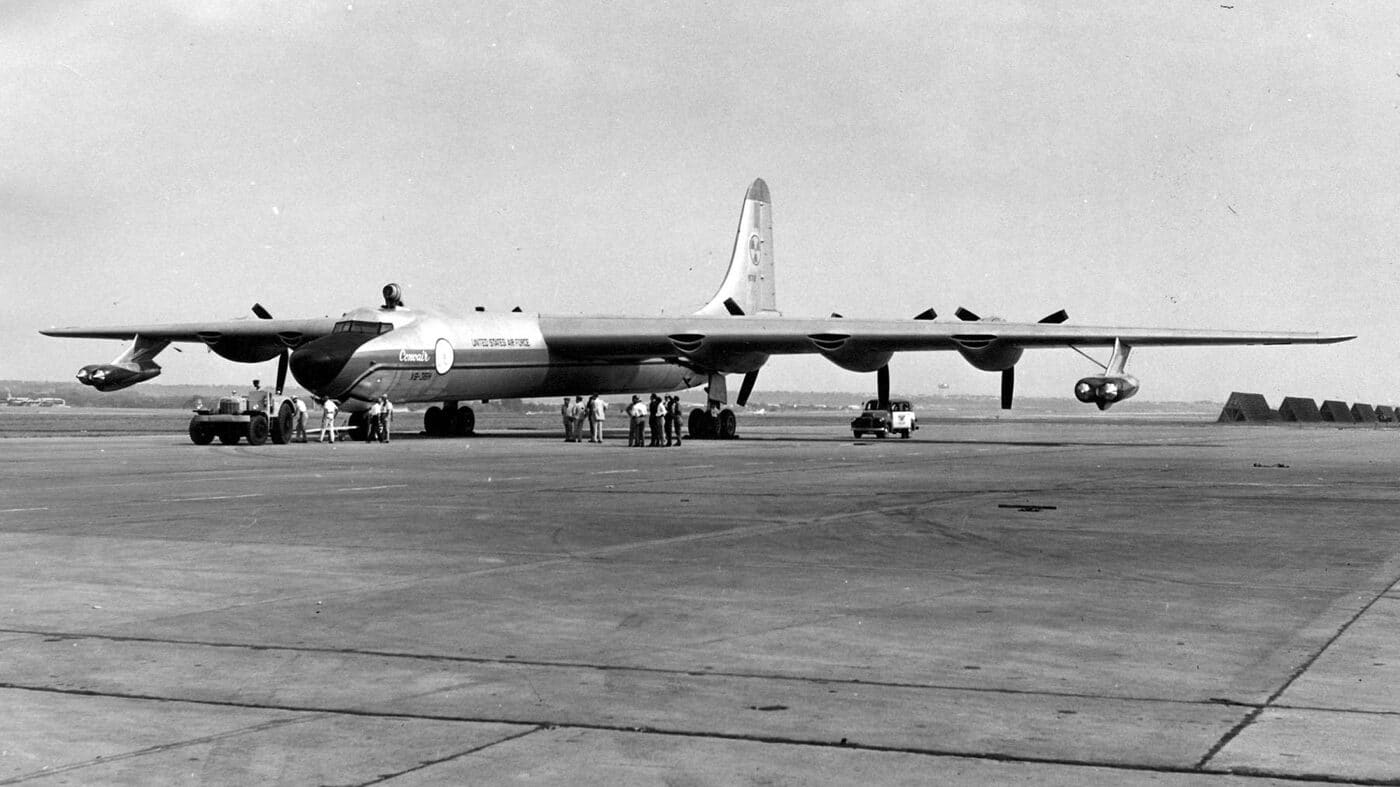
Engineers examine the Convair NB-36H on the ramp prior to one of its test flights. Image: U.S. Air Force
Just as some saw the potential, critics voiced their concerns.
President Dwight D. Eisenhower told lawmakers there was no urgency to be placed upon the ANP program.
The program came to an end not with an atomic-sized bang, but with more of a whimper.
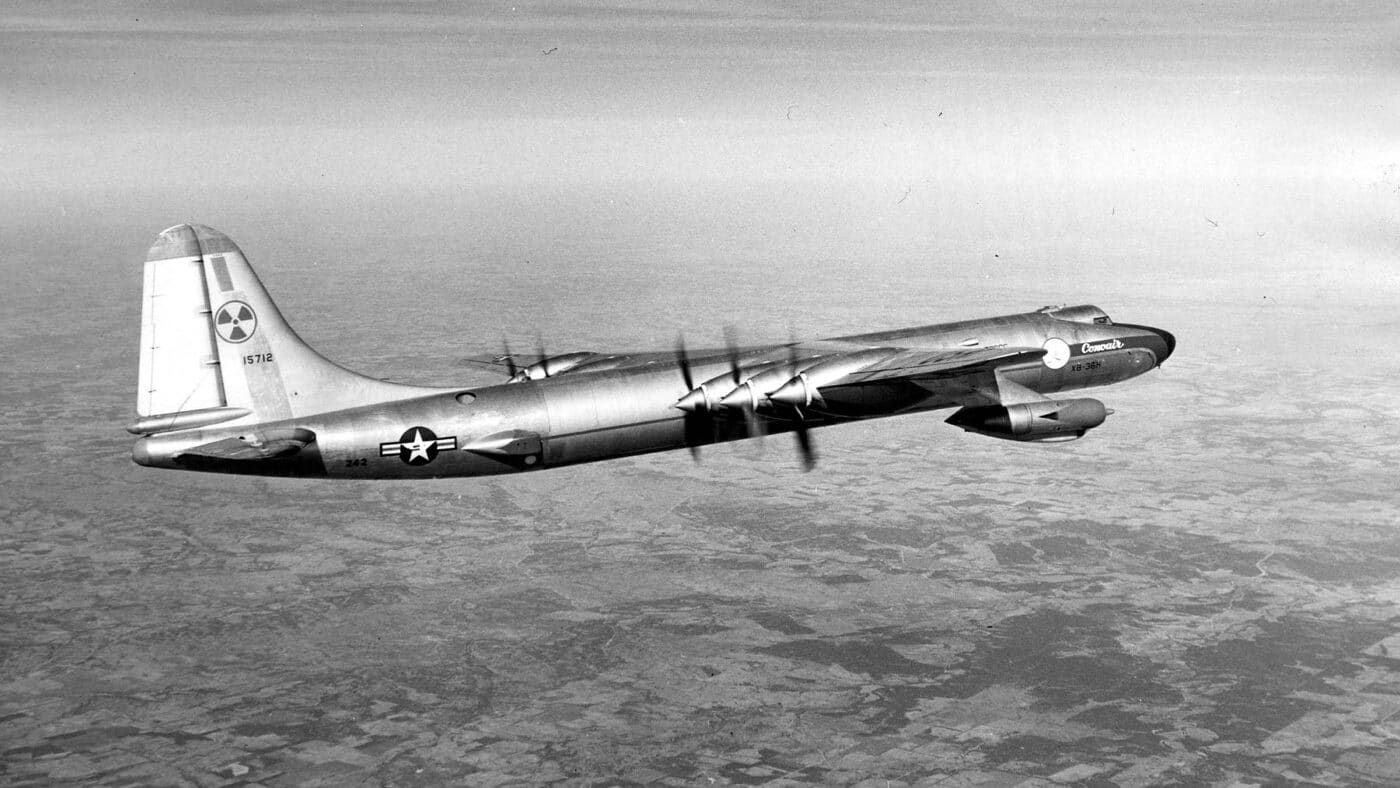
While the concept of a nuclear-powered aircraft may seem foolhardy today, the NB-36H bomber did have benefits such as a nearly unlimited range. Image: U.S. Air Force
The sole NB-36H was decommissioned, its nuclear reactor removed and the aircraft scrapped.
All radioactive elements were buried.
With decades of hindsight, it is easy to see that the program was doomed to failure.
The crash of an atomic-powered bomber over the United States could have been catastrophic.
Yet, it was soon determined to be too costly to operate.
That effort never gained any serious momentum, and nothing came of the sea services proposal.




